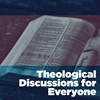As small-group leaders, one of our biggest desires for our group members is that they grow in their knowledge, understanding, and application of God's Word. To help our group members dive into Scripture, we often choose curriculum focused on particular books, chapters, or characters from the Bible. Some even go straight to the Bible and discuss particular passages or whole books. This kind of study has a lot of value, but we can inadvertently miss out on a key piece of understanding God's Word—the big picture.
The Bible is simultaneously a book of complete unity and diversity. It's diverse because it's a collection of 66 books written in various genres by over 40 authors in a span of over 1500 years. Yet it's all unified into one story, the grand story God has been writing since the beginning of time. It's within that grand story that each of our lives fit and find meaning.
When we study small sections of Scripture, we often miss how it all fits together. We forget that rather than simply being filled with independent stories and instruction, the Bible is a cohesive whole. Imagine how valuable it would be for the people in your small group to understand God's grand story, to see how their lives fit in, and to be able to articulate this clearly to others.
Help Them See the Big Picture
There are several great resources available to help your group members see the big picture of Scripture.
How to Read the Bible in Changing Times, Mark Strauss
This is a great resource that will challenge and deepen your understanding of how to recognize the grand story of the Bible and see how each section of Scripture fits into it. You'll learn valuable skills so that you don't take the Bible out of context, and you'll discover how to appropriately apply the Bible to life—regardless of time or culture.
The Blue Parakeet: Rethinking How You Read the Bible, Scot McKnight
This excellent resource challenges the way we tend to pick apart the Bible by reading only bits and pieces. It helps us learn how to recognize the overarching story and see the major themes God is trying to communicate to us.
The Story of Scripture, Robbie F. Castleman
This LifeGuide study from InterVarsity Press will take your group on a journey from Genesis to Revelation in 12 sessions. Using the terms of storytelling, the study helps you discover the key points of God's story from beginning to end and how it all fits together.
Strategies for Every Meeting
Regardless of your curriculum, there are ways to help your group understand the big picture of Scripture. Many theologians describe God's grand story in terms of four stages: Creation, Fall, Redemption, and Restoration. These are the primary plot points throughout the Bible. You can also see them play out in individual stories, too, like Jesus' parable of the prodigal son.
In light of this, it's incredibly valuable to identify how a passage you're reading fits into these four stages. As you examine Scripture, ask the group: "Which part of the story does this fit into: Creation, Fall, Redemption, or Restoration?" It really makes a difference to our interpretation whether a passage is part of the Fall or the Restoration. When we ask this question, we help our group members learn to apply different passages in different ways.
What I really love about these four stages, though, is that we also see them in our own lives. It's helpful to teach our group members to see these four stages in their lives. We can ask:
- Who did God create you to be?
- What has fallenness looked like in your life?
- Have you found redemption through Jesus? If so, what did that process look like?
- What is God currently trying to restore in your life?
As group members begin to see the four stages in their own lives, they are better equipped to see how their stories are connected with God's big story. They'll view the Bible less as a textbook, a theology book, or a rule book, and instead see it as the diverse but unified story of God. With a fuller picture of God's story, your group members will understand the context of Scripture, how to apply God's truth, and how their story interweaves with God's.
—Carter Moss is a Campus Pastor and Life Groups Director for Newbreak Church, a large multi-site church in San Diego, and an advisor for SmallGroups.com.












